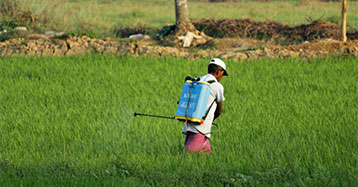Historic Chemical Contaminants
NCCOS delivers scientific products and services designed to inform and improve the management of chemical contaminants in the coastal zone. Contaminants of concern for coastal ecosystems include legacy compounds (e.g. DDT and PCBs), current- use chemicals (e.g. pesticides and PAHs), and emerging chemicals (e.g. pharmaceuticals and personal care products, nanomaterials, microplastics, and PFAS). These chemicals may be hazardous to both environmental and human health, and threaten coastal economies. NCCOS measures levels of chemicals in coastal water, sediments, and fish and shellfish tissues in order to monitor the extent of and trends in contamination. Concurrent ecotoxicology studies in laboratory and mesocosm systems serve to define lethal and sublethal effects on marine and estuarine species and allow NCCOS to link chemical exposure to chemical effects.
Contaminant Monitoring and Assessment
Chemical Contaminant Toxicity
Estuarine systems are considered especially sensitive to climate change, as they are already subject to considerable anthropogenic stress, including land use changes, biological contamination (non-native species and pathogens), and chemical pollution. Climate change effects may intensify the negative effects of anthropogenic stressors in estuaries. Changes in climate variables such as temperature, salinity, and pH can influence chemical exposures, the physiology of organisms, and the response of organisms to chemicals. Toxicity testing for regulatory purposes is conducted under standard conditions of light, temperature, salinity, etc., which may not reflect real environmental exposures. NCCOS scientists have been incorporating climate factors into their assessment of oil spills, pesticide exposures, and PFAS compounds. By expanding the climate conditions under which we conduct aquatic toxicity testing, we can improve environmental risk assessment of chemical contaminants and management capabilities under changing climate conditions.

Pesticides
We are identifying the toxic effects that mosquito-control agents may have on estuarine species and the coastal environment.

Polychlorinated Biphenyl (PCB)
PCBs bioaccumulate in organisms. U.S. production ended in 1977, but it is still present in the environment. NCCOS collects sediment and fish samples to determine PCB concentration.
Effects of Climate Factors
The changing climate is altering how contaminants react within the environment. NCCOS scientists are investigating how temperature, ultraviolet rays, heavy precipitation events, and other factors can change how the natural environment and organisms absorb and respond to chemical contaminants.



